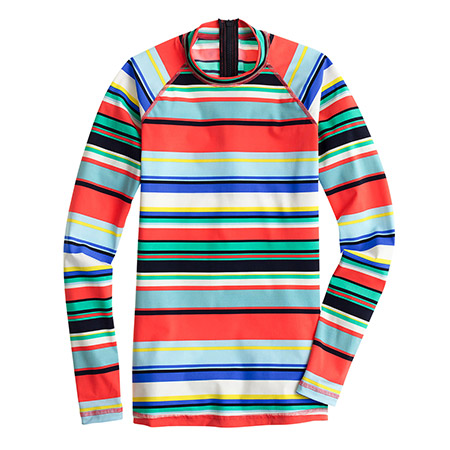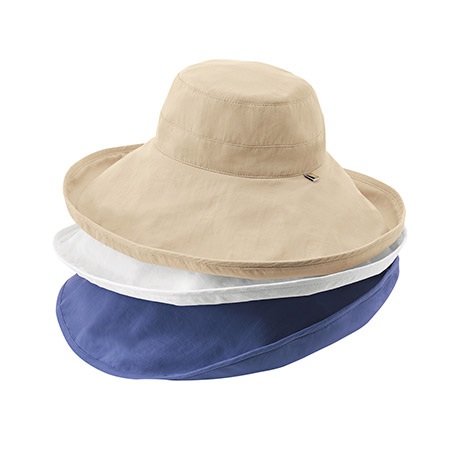How Often Should You Really Get Skin Cancer Checkups?

Photo: Rosa/Studio D
Q: I've been told I should have regular skin cancer checkups. Is that really necessary?
It was late August last year. I'd recently had a skin cancer screening. Diagnosis: all clear. So when David Colbert, MD, of New York Dermatology Group (who'd invited me to his office for a facial) suggested a biopsy on a tiny, pink raised dot next to my nose, I wasn't keen on the idea. It looked like nothing and hadn't been noted at the screening. But as we were chatting, Colbert's eye kept returning to that spot. Finally, he called in an associate, Jessica Weiser, MD, for a second opinion. Worth a biopsy, she said firmly, and she assured me, as she quickly nicked off a piece, I'd hardly notice. I didn't notice, and soon forgot about it.
She phoned me two weeks later. "It's a basal cell skin cancer," she said. "It's really small, but it has to be removed."
At 65, with fair skin, light eyes, and many memories of summers spent slathered in baby oil on a blazing beach, I shouldn't have been surprised. Though for the past 20 years I've been diligent about wearing sunscreen, the damage was done.
Basal cell is the most common form of skin cancer; an estimated 2.8 million cases are diagnosed annually in the U.S., according to the Skin Cancer Foundation. (The incidence of both basal cell and its sister, squamous cell, the second-most-common type, has increased 300 percent since 1994. Tanning beds and extended longevity are two likely reasons.) Fortunately, basal cell rarely spreads. When it's found on the face, scalp, hands, or feet—wherever the skin is very thin—the treatment of choice is Mohs micrographic surgery, says Deborah S. Sarnoff, MD, clinical professor of dermatology at NYU Medical School. Mohs, usually performed in a doctor's office under local anesthesia (as mine was, by Sarnoff), not only spares healthy tissue, getting the best cosmetic result, but has the highest cure rate at nearly 100 percent. Slivers of removed tissue are microscopically examined during surgery while you wait in the operating chair, fingers and toes crossed that after the initial cancerous tissue, the remaining samples come back cancer-free.
A few days after my Mohs appointment, I posted a photo on Facebook. "Basal cell skin cancer cured," I wrote. "Vanity, too!" The spot was really small; still, the surgery required more than a dozen stitches. A black thread snaked down my cheek, ending in a little knot just above a purple bruise. As reconciled as I was to the idea that after years of unprotected sun exposure I'd wound up with skin cancer, I was profoundly unprepared for the raw-looking wound. I realized, in one gut-wrenching moment, that I hadn't really understood the consequences of my carelessness. And those consequences had been preventable!
If you've been faithfully reading the beauty stories in this magazine, you know you need a broad-spectrum SPF 30 sunscreen every day, rain or shine. You can protect yourself further by covering up (see the cute shirt and sun hats, below) and staying in the shade between 10 A.M. and 2 P.M., when the sun is strongest. There's also promising research: Last year an Australian study found that a form of vitamin B3 taken orally significantly reduced the incidence of basal and squamous cell skin cancers in people at high risk of recurrence.
Sarnoff has given me a couple of injections of the steroid Kenalog and a pulsed dye laser treatment to minimize my scar, and the appearance has improved remarkably. Because people who have had a basal cell are at increased risk for more, I'll have skin checks every three months for now instead of once a year. And I'll be wearing the mark on my face as a reminder to be careful in the sun. Let it remind you, too!
Block Party
Along with a broad- spectrum SPF 30 sunscreen, a shirt and hat with UPF 50 or higher ensure excellent protection.

Photo: Courtesy of JCrew
Long sleeve rash guard: $98, jcrew.com

Photo: Courtesy of Sun Precautions
Ultra-wide rolled-brim hats : $75 each, sunprecautions.com)
It was late August last year. I'd recently had a skin cancer screening. Diagnosis: all clear. So when David Colbert, MD, of New York Dermatology Group (who'd invited me to his office for a facial) suggested a biopsy on a tiny, pink raised dot next to my nose, I wasn't keen on the idea. It looked like nothing and hadn't been noted at the screening. But as we were chatting, Colbert's eye kept returning to that spot. Finally, he called in an associate, Jessica Weiser, MD, for a second opinion. Worth a biopsy, she said firmly, and she assured me, as she quickly nicked off a piece, I'd hardly notice. I didn't notice, and soon forgot about it.
She phoned me two weeks later. "It's a basal cell skin cancer," she said. "It's really small, but it has to be removed."
At 65, with fair skin, light eyes, and many memories of summers spent slathered in baby oil on a blazing beach, I shouldn't have been surprised. Though for the past 20 years I've been diligent about wearing sunscreen, the damage was done.
Basal cell is the most common form of skin cancer; an estimated 2.8 million cases are diagnosed annually in the U.S., according to the Skin Cancer Foundation. (The incidence of both basal cell and its sister, squamous cell, the second-most-common type, has increased 300 percent since 1994. Tanning beds and extended longevity are two likely reasons.) Fortunately, basal cell rarely spreads. When it's found on the face, scalp, hands, or feet—wherever the skin is very thin—the treatment of choice is Mohs micrographic surgery, says Deborah S. Sarnoff, MD, clinical professor of dermatology at NYU Medical School. Mohs, usually performed in a doctor's office under local anesthesia (as mine was, by Sarnoff), not only spares healthy tissue, getting the best cosmetic result, but has the highest cure rate at nearly 100 percent. Slivers of removed tissue are microscopically examined during surgery while you wait in the operating chair, fingers and toes crossed that after the initial cancerous tissue, the remaining samples come back cancer-free.
A few days after my Mohs appointment, I posted a photo on Facebook. "Basal cell skin cancer cured," I wrote. "Vanity, too!" The spot was really small; still, the surgery required more than a dozen stitches. A black thread snaked down my cheek, ending in a little knot just above a purple bruise. As reconciled as I was to the idea that after years of unprotected sun exposure I'd wound up with skin cancer, I was profoundly unprepared for the raw-looking wound. I realized, in one gut-wrenching moment, that I hadn't really understood the consequences of my carelessness. And those consequences had been preventable!
If you've been faithfully reading the beauty stories in this magazine, you know you need a broad-spectrum SPF 30 sunscreen every day, rain or shine. You can protect yourself further by covering up (see the cute shirt and sun hats, below) and staying in the shade between 10 A.M. and 2 P.M., when the sun is strongest. There's also promising research: Last year an Australian study found that a form of vitamin B3 taken orally significantly reduced the incidence of basal and squamous cell skin cancers in people at high risk of recurrence.
Sarnoff has given me a couple of injections of the steroid Kenalog and a pulsed dye laser treatment to minimize my scar, and the appearance has improved remarkably. Because people who have had a basal cell are at increased risk for more, I'll have skin checks every three months for now instead of once a year. And I'll be wearing the mark on my face as a reminder to be careful in the sun. Let it remind you, too!
Block Party
Along with a broad- spectrum SPF 30 sunscreen, a shirt and hat with UPF 50 or higher ensure excellent protection.

Photo: Courtesy of JCrew
Long sleeve rash guard: $98, jcrew.com

Photo: Courtesy of Sun Precautions
Ultra-wide rolled-brim hats : $75 each, sunprecautions.com)



